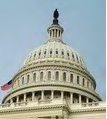|
ATP Monitors rewrite of No Child Left Behind Act in U.S. Congress ATP has been closely monitoring the U.S. Congress as it goes about rewriting the controversial “No Child Left Behind Act”, which is the current version of the Elementary and Second Education Act (ESEA). ATP Legislative Counsel, Alan Thiemann, has been monitoring the progress of the bill update as it was being worked on by a joint conference committee, comprised of leaders of both the House and Senate education committees. On November 19, Thiemann reported, the Conferees finished their work and passed out a compromise bill with only a single no vote. The bill will be titled the “Every Student Succeeds Act” (S.1177), which strongly suggests that most of the final language comes from the Senate version.. No one still has seen the actual language and the Conference Report is not supposed to be filed until after Thanksgiving. It appears that the plan is to have the bill on the House floor on or about December 2; if the House passes the bill, it would go to the Senate floor the following week. Thiemann went on to note, “ there remains some uncertainty about the prospects of this bill in the House, given the tough time the House had even passing any sort of legislation because of the demands of the House Republicans. And the fact that any House vote will be managed by new Speaker Paul Ryan, who has no particular skin in the education game, gives rise to another potential source of problems.” Thiemann reported that he is continuing to work with ATP Education Division members “to explore what sort of position ATP might be able to provide to Congress during the floor votes. At a minimum, we (the ATP) have a solid document around which to begin discussions about ED implementation regulations next year if the bill does indeed pass.” As for the details of the new draft itself, Thiemann noted that, “Generally, everyone agrees that states ‘are being given the car keys’ to run their own accountability systems, including the role of assessments (as long as they continue the current annual testing). From there, however, the landscape gets pretty murky.” Thiemann provided the following details as they known at this time. He indicated that, “The framework would consolidate a number of smaller programs into a block grant, a big priority for Kline. However, it appears traditional state funding for assessments is not part of that block grant. And the compromise would take direct aim at what Senator Alexander has called the "National School Board" by prohibiting the U.S. Secretary of Education from interfering with state prerogatives on teacher evaluation, testing, standards, interventions in school turnarounds, and more. But the framework does include some key wins for the Democrats, including a requirement that states turn around around the bottom 5 percent of their schools (an idea borrowed from the administration's NCLB waivers program of the last few years). How a state accomplishes this goal, though, is in its hands in terms of setting goals for schools, school ratings, and more. States could also incorporate other factors into their accountability systems, including access to advanced coursework, school environment, and safety. States would also have to identify and take action in schools where so-called student subgroups (including English-language learners and students in special education, as well as poor and minority students) are struggling. Significantly, however, the bill doesn't say how many of those schools states would have to pinpoint, or what they would have to do to ensure that they are helping these students achieve—the bill allows state leaders to figure all that out,” Thiemann explained. He went on to note that, “On ‘opt out’ (a term for local policies which allow parents not to have their children take annual state tests) the new act largely sticks with the Senate language, which would allow states to create their own testing opt-out laws, while maintaining the federal requirement for 95% participation in tests. However, unlike under the current NCLB law, in which schools with lower-than-95 percent participation rates are automatically seen as failures, local districts and states would get to decide what should happen in schools that miss targets. States would have to take low testing participation into consideration in their accountability systems. Just how they would do that would be up to them, though.” Thiemann added that “Whether ATP will communicate on the reauthorization is still being decided (by ATP Education Division members) and depends on whether a consensus can be reached on all issues by all ATP member. Thiemann reported that he is working with ATP Board Members Tim Vansickle (Questar) and Nikki Eatchel (Scantron), as well as ACT and ETS, on further revised comments which will be circulated to ATP Education members. Though he added that “As far as passage of the compromise (act), there is still concern about the House Republican reaction, since it appears that very little has been included that they will agree with.”
|


